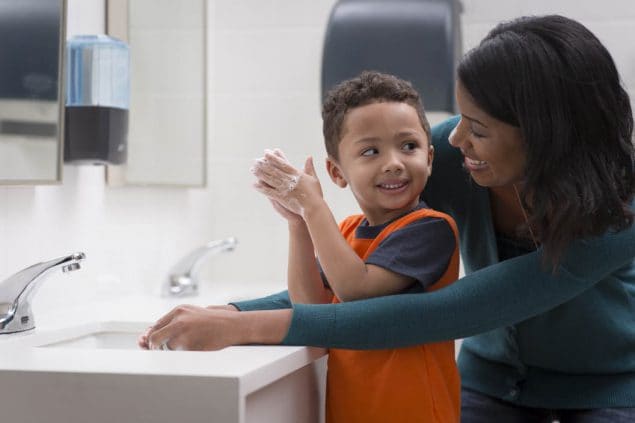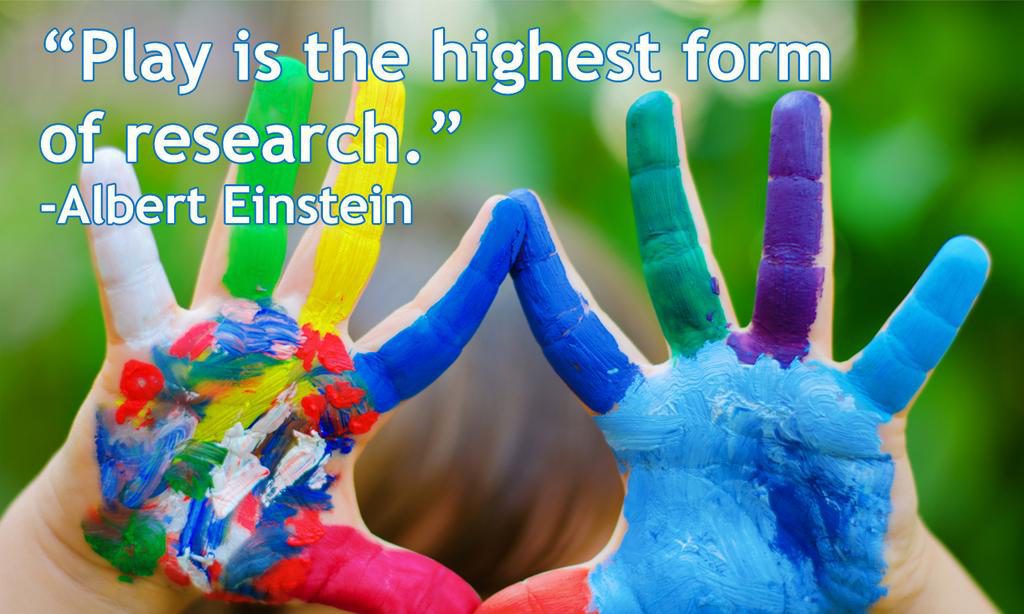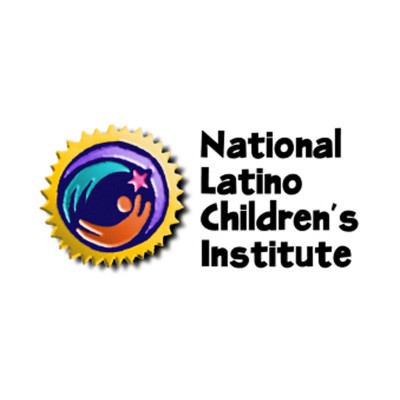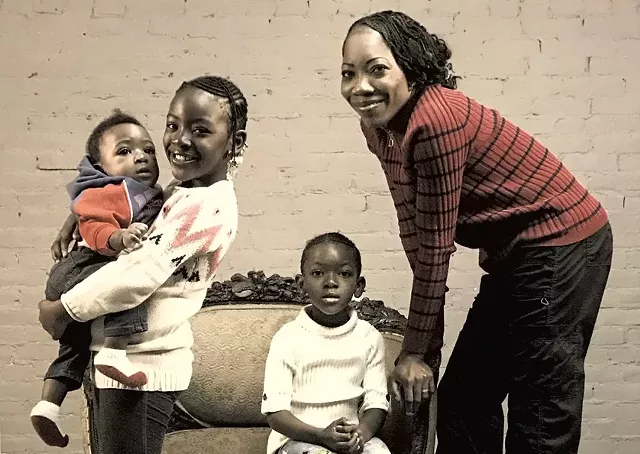
Handwashing is vital to the health and safety of all families. In the time of COVID 19, it is extremely critical that children learn the importance of washing their hands and how to do it correctly so that they continue to be safe and healthy this academic year.
Here are some tips from the CDC to guide you on teaching your children how to effectively wash their hands and a video from children at our own school showing exactly how to wash your hands and for how long to wash them.
Follow Five Steps to Wash Your Hands the Right Way
Washing your hands is easy, and it’s one of the most effective ways to prevent the spread of germs. Clean hands can stop germs from spreading from one person to another and throughout an entire community—from your home and workplace to childcare facilities and hospitals.
Follow these five steps every time.
- Wet your hands with clean, running water (warm or cold), turn off the tap, and apply soap.
- Lather your hands by rubbing them together with the soap. Lather the backs of your hands, between your fingers, and under your nails.
- Scrub your hands for at least 20 seconds. Need a timer? Hum the “Happy Birthday” song from beginning to end twice.
- Rinse your hands well under clean, running water.
- Dry your hands using a clean towel or air dry them.
In addition to these guidelines,
Give frequent reminders
Building handwashing skills takes time. At first, your child will need regular reminders of how and when to wash hands. It is especially important to remind children to wash their hands after using the bathroom, before eating, after touching pets, after playing outside, and after coughing, sneezing, or blowing their nose. But once handwashing becomes a habit and a regular part of your child’s day, they will practice it throughout their lives.
Lead by example by washing your hands
Young children learn by imitating the behaviors of adults in their lives. When you make handwashing part of your routine, you’re setting an example for your children to follow.
Use Hand Sanitizer When You Can’t Use Soap and Water

You can use an alcohol-based hand sanitizer that contains at least 60% alcohol if soap and water are not available.
Washing hands with soap and water is the best way to get rid of germs in most situations. If soap and water are not readily available, you can use an alcohol-based hand sanitizer that contains at least 60% alcohol. You can tell if the sanitizer contains at least 60% alcohol by looking at the product label.
Sanitizers can quickly reduce the number of germs on hands in many situations. However,
- Sanitizers do not get rid of all types of germs.
- Hand sanitizers may not be as effective when hands are visibly dirty or greasy.
- Hand sanitizers might not remove harmful chemicals from hands like pesticides and heavy metals.
Video from Greater Bergen Community Action Head Start: Hand washing with Children
https://www.youtube.com/watch?v=qZocT8YhjyE
Spanish
Lavarse las manos es vital para la salud y la seguridad de todas las familias. En el momento de COVID 19, es extremadamente crítico que los niños aprendan la importancia de lavarse las manos y cómo hacerlo correctamente para que sigan estando seguros y saludables este año académico.
Aquí hay algunos consejos de los CDC para guiarlo en cómo enseñar a sus hijos cómo lavarse las manos de manera efectiva y un video de niños en nuestra propia escuela que muestra exactamente cómo lavarse las manos y por cuánto tiempo lavarlas.
Siga cinco pasos para lavarse las manos de la manera correcta
Lavarse las manos es fácil y es una de las formas más efectivas de prevenir la propagación de gérmenes. Las manos limpias pueden evitar que los gérmenes se propaguen de una persona a otra y por toda la comunidad, desde su hogar y lugar de trabajo hasta las guarderías y hospitales.
Siga estos cinco pasos en todo momento.
- Mójese las manos con agua corriente limpia (tibia o fría), cierre el grifo y aplique jabón.
- Enjabónese las manos frotándolas con el jabón. Enjabonar el dorso de las manos, entre los dedos y debajo de las uñas.
- Frote sus manos durante al menos 20 segundos. ¿Necesitas un temporizador? Tararee la canción “Feliz cumpleaños” de principio a fin dos veces.
- Enjuágate bien las manos con agua corriente limpia.
- Séquese las manos con una toalla limpia o séquelas al aire.
Además de estas Guias,
Dar recordatorios frecuentes
Desarrollar habilidades para lavarse las manos lleva tiempo. Al principio, su hijo necesitará que le recuerden regularmente cómo y cuándo lavarse las manos. Es especialmente importante recordarles a los niños que se laven las manos después de ir al baño, antes de comer, después de tocar a las mascotas, después de jugar al aire libre y después de toser, estornudar o sonarse la nariz. Pero una vez que lavarse las manos se convierta en un hábito y una parte regular del día de su hijo, lo practicará durante toda su vida.
Predica con el ejemplo lavándote las manos
Los niños pequeños aprenden imitando los comportamientos de los adultos en sus vidas. Cuando usted hace que lavarse las manos sea parte de su rutina, está dando un ejemplo a seguir para sus hijos.
Use desinfectante para manos cuando no pueda usar agua y jabón

Puede utilizar un desinfectante de manos a base de alcohol que contenga al menos un 60% de alcohol si no dispone de agua y jabón.
Lavarse las manos con agua y jabón es la mejor manera de deshacerse de los gérmenes en la mayoría de las situaciones. Si no hay agua y jabón disponibles, puede usar un desinfectante de manos a base de alcohol que contenga al menos un 60% de alcohol. Puede saber si el desinfectante contiene al menos un 60% de alcohol mirando la etiqueta del producto.
Los desinfectantes pueden reducir rápidamente la cantidad de gérmenes en las manos en muchas situaciones. Sin embargo,
- Los desinfectantes no eliminan todos los tipos de gérmenes.
- Los desinfectantes de manos pueden no ser tan efectivos cuando las manos están visiblemente sucias o grasosas.
- Es posible que los desinfectantes de manos no eliminen los productos químicos nocivos de las manos como pesticidas y metales pesados.
Video de Greater Bergen Community Action Head Start: Video de lavarse las manos
https://www.youtube.com/watch?v=qZocT8YhjyE





 I chose to study Eastern and Southern Africa because to me there is such a high need for light still to be shed in Africa. Many parents that participate in language programs in my community are from Kenya and Uganda. Equal and quality education is a huge area of opportunity that young children in these regions need. In one particular region, Uganda, schools are rarely equipped to teach students with varied abilities. There are no schools that provide ramps and physical access to children with wheelchairs or physical impairments. I addition, many schools Rwanda and in the region of eastern and southern Africa do not have inclusive education (Houser, 2018).
I chose to study Eastern and Southern Africa because to me there is such a high need for light still to be shed in Africa. Many parents that participate in language programs in my community are from Kenya and Uganda. Equal and quality education is a huge area of opportunity that young children in these regions need. In one particular region, Uganda, schools are rarely equipped to teach students with varied abilities. There are no schools that provide ramps and physical access to children with wheelchairs or physical impairments. I addition, many schools Rwanda and in the region of eastern and southern Africa do not have inclusive education (Houser, 2018). The school also engaged and empowered parents by conducting workshops that helped them created learning activities and learning aids for families to use at home making the home to school connections. After a year in this school where Olivier received therapy and a warm inclusive learning environment, he has flourished. Olivier has been able to learn how to count to 1000, can hold a 5 liter can with his own hands, and most importantly learned the skills to connect with his friends through sports and other physical activities (Houser, 2018).
The school also engaged and empowered parents by conducting workshops that helped them created learning activities and learning aids for families to use at home making the home to school connections. After a year in this school where Olivier received therapy and a warm inclusive learning environment, he has flourished. Olivier has been able to learn how to count to 1000, can hold a 5 liter can with his own hands, and most importantly learned the skills to connect with his friends through sports and other physical activities (Houser, 2018).











 Becoming an anti-bias early childhood teacher is a journey wrought with self-reflection, inner-perspective on our personal beliefs, knowledge about the injustices that diverse groups face, and ways that we could build our communities, families, and children with pride about who they are and how to stand up for themselves. I agree that this journey to ensuring that the children and communities we work in are treated with equitable justice.
Becoming an anti-bias early childhood teacher is a journey wrought with self-reflection, inner-perspective on our personal beliefs, knowledge about the injustices that diverse groups face, and ways that we could build our communities, families, and children with pride about who they are and how to stand up for themselves. I agree that this journey to ensuring that the children and communities we work in are treated with equitable justice.


